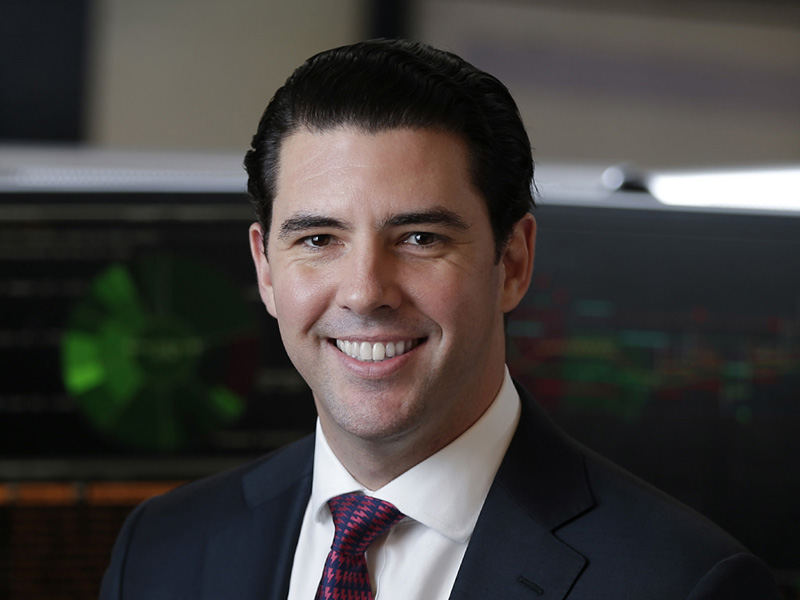BTIG Outlook: REITs in the Woods?
BTIG's REIT analyst team outlines their expectations for 2017.
By Suzann D. Silverman
When it comes to risk and uncertainty, “this year we have both,” noted James Sullivan, the longtime analyst who joined BTIG in July to help launch its REIT research practice. Offering an outlook on 2017 together with fellow analysts Michael Gorman and Tom Catherwood—an outlook they titled “Into the Woods” and subtitled with the line from the theme song: “Who Can Tell What’s Waiting on the Journey?”—he observed that there may be a fairytale of sorts unfolding, layered with a lot more political and policy uncertainty than we’re used to facing.
The starting point for the risk is projected growth at the low end of the average, with same-property net operating income decelerating but high valuations that suggest a higher cost of capital and compression. Cap rates are low and likely to rise—with interest rates anticipated to reach 2.75 to 3 percent by year-end, cap rates are likely to reach 6.25 to 6.50 percent—causing valuations to come down slightly and REIT prices to remain flat or decline. The team predicted total returns in the zero to 4 percent range this year, compared to the NAREIT average of 8.5 percent at the end of 2016 and 11.8 percent over the past five years.
That said, they anticipate a positive long-term impact from the new administration’s policy plans and predicted that the major property types will outperform this year. And with foreign investors continuing to eye U.S. opportunities, cap rates for the best assets will remain relatively low.
Sector Scenarios
Apartments: More specifically, Sullivan said that after underperforming last year, apartment REITs should see a mid-year peak in supply this year and a deceleration in rental growth that will nonetheless stabilize around 3 percent.
Hotels: “I don’t think I’ve ever seen a supply-demand imbalance as big as we currently face,” Sullivan declared. Business travel may rebound, and hotel was the best-performing sector at year-end, but he believes the sector is growing “too far, too fast,” and that coupled with a negative impact on international travelers from the strong dollar, anticipated new inbound travel policies and stricter TSA protocols promises to slow growth this year, including average daily rates and NOI.
Health Care: This will be a choppy year, according to Gorman, declaring that the sector is “fighting a rising tide,” with the lowest relative multiples in more than five years and a negative correlation of returns with GDP and interest rates. Growth has been driven by acquisitions, but opportunities are slowing, especially for the larger deals needed to generate FFO growth, he said. He predicted about $4 billion in acquisitions this year, compared to $9 billion last year. And senior housing, which could be bolstering the sector, is fighting oversupply. However, medical office continues its five-year run of solid performance, with good growth potential in FFO per share at a discounted valuation.
Malls: Sullivan likes the large regional malls, although the sector’s performance is “as negative as I’ve ever seen it,” he observed. Many of the traditional mall retailers that are shutting down stores are private equity owned, with too much leverage to survive the low-growth sales environment, and there are plenty of better-positioned players willing to take over the space. He predicted improvements in sales per square foot and sentiment in the second half of the year as GDP and inflation rise.
Strip Centers: Internal growth for strip centers, on the other hand, will slow this year to below 3 percent after outperforming in 2016, according to Gorman, who favors grocery- and drug store-anchored centers, and traditional retail over mixed-use. Fundamentals remain solid, he noted, with occupancies above 95 percent and leasing spreads in the double digits. Tenant closures will continue in 2017, but centers with grocery and drug stores are anchored by necessity shopping, which also protects them from growth of e-commerce.
Triple Net: While long-term leases make this an extremely defensive sector, growth has been low because acquisition opportunities have slowed, and many buyers are transacting 1031 exchanges rather than putting cash into deals.
Industrial: With nine straight quarters of occupancy above 95 percent—a historical first—NOI returning to its 2007 peak and rent growth also at its peak, the sector bears watching, according to Catherwood. So far, though, all signs are positive, with growth in e-commerce only driving further improvement. While Macy’s is closing stores, for instance, it is shifting investment into warehouses and distribution sites. Development has remained controlled, with demand outpacing supply by 40 percent. Catherwood anticipates big aggregators like The Blackstone Group spinning off new REITs over the next few years.
Office: This “ray of sunshine,” according to Catherwood, will see accelerating same-store NOI growth this year, rising to 3.7 percent from 3.0 percent last year. West Coast markets have continued to outperform the East Coast, and he expects that to continue, even if financial deregulation and other policy changes improve the jobs picture for East Coast technology and manufacturing companies.










You must be logged in to post a comment.